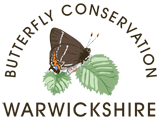Apologies
We are currently updating our website. As a result, our species pages will not be available until the update has been completed.
Steve Cheshire
Please note: From February 2023 all sightings records should be submitted via the iRecord Butterflies app available via the iTunes or Google Store. Find out more here: iRecord at Butterfly Conservation.
